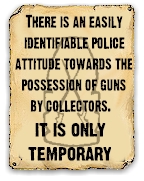|
|||||||
| Gun Control - A Failure of Policy, a Failure of Purpose
Yet restrictive firearm legislation has failed to reduce gun violence in Australia, Canada, and Great Britain. The policy of confiscating guns has been an expensive failure, according to the paper The Failed Experiment: Gun Control and Public Safety in Canada, Australia, England and Wales, authored by Professor Gary Mauser of the Simon Fraser University. “What makes gun control so compelling for many is the belief that violent crime is driven by the availability of guns, and more importantly, that criminal violence in general may be reduced by limiting access to firearms,” says Gary Mauser. His study examines crime trends in Commonwealth countries that have recently introduced firearm regulations. Mauser notes that the widely ignored key to evaluating firearm regulations is to examine trends in total violent crime, not just firearm crime. The United States provides a valuable point of comparison for assessing crime rates as that country has witnessed a dramatic drop in criminal violence over the past decade – for example, the homicide rate in the US has fallen 42 percent since 1991. This is particularly significant when compared with the rest of the world – in 18 of the 25 countries surveyed by the British Home Office, violent crime increased during the 1990s. The justice system in the U.S. differs in many ways from those in the Commonwealth but perhaps the most striking difference is that qualified citizens in the United States can carry concealed handguns for self-defence. During the past few decades, more than 25 states in the U.S. have passed laws allowing responsible citizens to carry concealed handguns. In 2003, there are 35 states where citizens can get such a permit. Disarming the public has not reduced criminal violence in any country examined in this study. In all these cases, disarming the public has been ineffective, expensive, and often counter productive. In all cases, the effort meant setting up expensive bureaucracies that produce no noticeable improvement to public safety or have made the situation worse. Mauser points to these trends in the countries he examined: England and Wales Both Conservative and Labour governments have introduced restrictive firearms laws over the past 20 years; all handguns were banned in 1997. Yet in the 1990s alone, the homicide rate jumped 50 percent, going from 10 per million in 1990 to 15 per million in 2000. While not yet as high as the US, in 2002 gun crime in England and Wales increased by 35 percent. This is the fourth consecutive year that gun crime has increased. Police statistics show that violent crime in general has increased since the late 1980s and since 1996 has been more serious than in the United States. Australia The Australian government made sweeping changes to the firearms legislation in 1997. However, the total homicide rate, after having remained basically flat from 1995 to 2001, has now begun climbing again. While violent crime is decreasing in the United States, it is increasing in Australia. Over the past six years, the overall rate of violent crime in Australia has been on the rise – for example, armed robberies have jumped 166 percent nationwide. The confiscation and destruction of legally owned firearms has cost Australian taxpayers at least $500 million. The cost of the police services bureaucracy, including the costly infrastructure of the gun registration system, has increased by $200 million since 1997. “And for what?” asks Mauser. “There has been no visible impact on violent crime. It is impossible to justify such a massive amount of the taxpayers’ money for no decrease in crime. For that kind of tax money, the police could have had more patrol cars, shorter shifts, or better equipment.” Canada
The contrast between the criminal violence rates in the United States and in Canada is dramatic. Over the past decade, the rate of violent crime in Canada has increased while in the United States the violent crime rate has plummeted. The homicide rate is dropping faster in the US than in Canada. The Canadian experiment with firearm registration is becoming a farce says Mauser. The effort to register all firearms, which was originally claimed to cost only $2 million, has now been estimated by the Auditor General to top $1 billion. The final costs are unknown but, if the costs of enforcement are included, the total could easily reach $3 billion. “It is an illusion that gun bans protect the public. No law, no matter how restrictive, can protect us from people who decide to commit violent crimes. Maybe we should crack down on criminals rather than hunters and target shooters?” says Mauser.
Full Publication
|
|||||||
|
 Since
firearms are only a small fraction of criminal
violence, the public would not be safer if
restrictive legislation could reduce firearm
violence but had no effect on total criminal
violence.
Since
firearms are only a small fraction of criminal
violence, the public would not be safer if
restrictive legislation could reduce firearm
violence but had no effect on total criminal
violence. 

